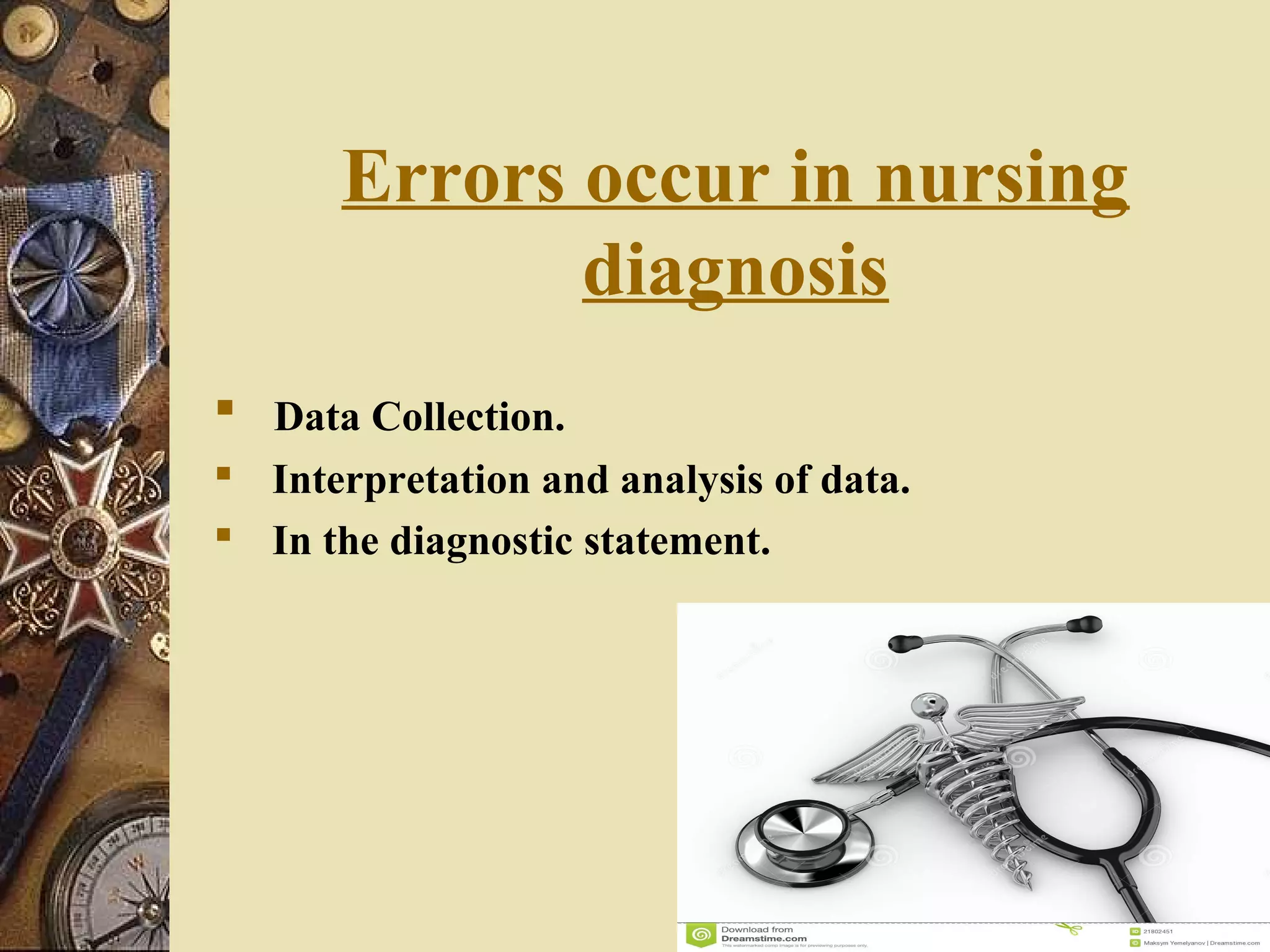This document provides an overview of critical thinking and the nursing process. It defines critical thinking as an organized cognitive process used to carefully examine one's own and others' thinking. Critical thinking aims to make evidence-based judgments rather than rely on assumptions. The nursing process involves assessing clients, diagnosing actual or potential health problems, planning and implementing interventions, and evaluating outcomes. Effective use of critical thinking and the nursing process requires gathering and analyzing client data, considering various options, and making well-reasoned clinical decisions.





























































































































































